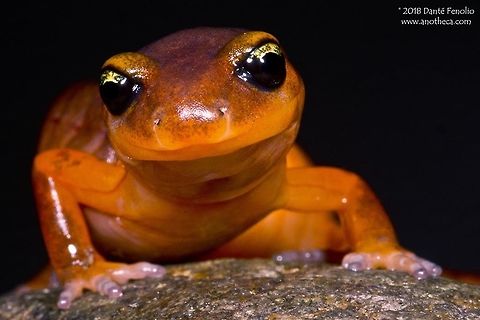
Appearance
The Ensatina subspecies ''E. e. eschscholtzii'', or Monterey ensatina, can be found in Santa Cruz, Monterey, and the California coastal mountains. They reach a total length of three to five inches, and can be identified primarily by the structure of the tail, and how it is narrower at the base. This salamander is the only type that has this tail structure and five toes on the back feet.Males often have longer tails than the females, and many of the salamanders have lighter colored limbs in comparison to the rest of the body. The salamanders lay their eggs underground, often in threes, which then hatch directly into salamanders, skipping the usual aquatic phase.
Naming
''Ensatina eschscholtzii'' has been described as a ring species in the mountains surrounding the Californian Central Valley. The complex forms a horseshoe shape around the mountains, and though interbreeding can happen between each of the 19 populations around the horseshoe, the ''Ensatina eschscholtzii'' subspecies on the western end of the horseshoe cannot interbreed with the ''Ensatina klauberi'' on the eastern end. As such, it is thought to be an example of incipient speciation, and provides an illustration of "nearly all stages in a speciation process" . Richard Highton argued that ''Ensatina'' is a case of multiple species and not a continuum of one species *Yellow-blotched ensatina — ''E. e. croceater''⤷ Monterey ensatina — ''E. e. eschscholtzii'' Gray, 1850
⤷ Large-blotched ensatina — ''E. e. klauberi'' Dunn, 1929
⤷ Oregon ensatina — ''E. e. oregonensis''
⤷ Painted ensatina — ''E. e. picta'' Wood, 1940
⤷ Sierra Nevada ensatina — ''E. e. platensis''
⤷ Yellow-eyed ensatina — ''E. e. xanthoptica'' Stebbins, 1949
Habitat
The Ensatina subspecies ''E. e. eschscholtzii'', or Monterey ensatina, can be found in Santa Cruz, Monterey, and the California coastal mountains. They reach a total length of three to five inches, and can be identified primarily by the structure of the tail, and how it is narrower at the base. This salamander is the only type that has this tail structure and five toes on the back feet.Males often have longer tails than the females, and many of the salamanders have lighter colored limbs in comparison to the rest of the body. The salamanders lay their eggs underground, often in threes, which then hatch directly into salamanders, skipping the usual aquatic phase.
References:
Some text fragments are auto parsed from Wikipedia.